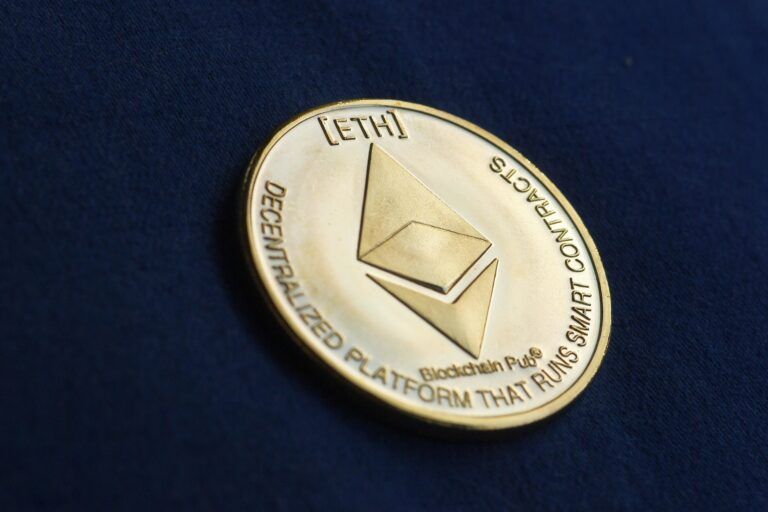Kain Warwick, the founder of Synthetix, shared his insights on the Ethereum network’s prospects for 2024 during a CNBC interview on 3 January 2024. Warwick reflected on Ethereum’s journey in 2023, noting the absence of a significant catalyst despite steady progress, including the Shanghai upgrade and a gradual price recovery. He highlighted Ethereum’s achievements over the past years, such as the transition to proof of stake and the development of layer two solutions (L2s), setting the stage for Ethereum to potentially dominate the market.
Warwick observed that 2023 was a year of building, especially for developers in the crypto and web3 space. He pointed out that many projects initiated in previous cycles were coming to fruition towards the end of the year. This development, coupled with Ethereum’s technical advancements, positions it strongly for 2024.
Looking ahead, Warwick commented on JP Morgan’s report predicting Ethereum’s outperformance over Bitcoin in 2024, driven by upgrades aimed at reducing transaction costs and enhancing speeds. He agreed with this sentiment, noting Ethereum’s long-standing position as the second-largest crypto asset and its dominance in areas like transaction activity, decentralized finance, and NFTs. However, he also acknowledged the growing competition from other networks like Solana and layer two scaling solutions, which are attracting attention away from Ethereum.
Warwick believes that Ethereum’s ecosystem, particularly its layer two scaling strategy, has consolidated significantly. This consolidation has led to a shift in the competitive landscape, with some networks pivoting to become Ethereum L2s, thereby reinforcing Ethereum’s position. He anticipates that Solana might emerge as the third major crypto asset, gaining significant attention and activity.
Regarding institutional adoption, Warwick is optimistic about Ethereum’s role. He sees Ethereum as the default choice for institutions exploring smart contracts, citing its technological superiority, wide adoption, and strong developer community. He likens choosing Ethereum to the old adage about IBM, where it’s a safe and obvious choice.
Finally, Warwick touched on the possibility of Ethereum flipping Bitcoin in market value, a scenario that would require a substantial price appreciation relative to Bitcoin. He believes this event could be a major catalyst for Ethereum, potentially reshaping the narrative and driving activity in the coming years. However, he acknowledges that this is a challenge Ethereum must overcome to achieve such a milestone.
Last month, The Block reported that JPMorgan analysts, led by Nikolaos Panigirtzoglou, forecast Ethereum to increase its market share in the crypto ecosystem and surpass its rivals, including Bitcoin, in 2024.
A key development for Ethereum is the anticipated H1 2024 implementation of EIP-4844, known as Proto-danksharding. This update, a precursor to the complete Danksharding process, was detailed by Ethereum co-founder Vitalik Buterin. Proto-danksharding introduces blob-carrying transactions, which are regular transactions containing a large data segment, or blob, around 125 kB in size. These blobs provide a more efficient data storage solution, although they can’t be directly accessed by the Ethereum Virtual Machine (EVM), which can only interact with a commitment to the blob.
An important feature of Proto-danksharding is the requirement for validators and users to validate the availability of the entire data, including blobs. This setup limits data bandwidth to 1 MB per slot, lower than the 16 MB projected in the full Danksharding model. Nonetheless, this upgrade is expected to greatly improve scalability by allowing blob data to exist without competing with the gas usage of standard Ethereum transactions.
The Block’s article also noted that this upgrade would particularly benefit Layer 2 networks like Arbitrum and Optimism by providing additional temporary data space, thereby increasing network throughput and reducing transaction fees, thus improving their efficiency.
On the other hand, JPMorgan’s analysts were more cautious about the broader crypto market for the upcoming year. They argued that factors positively impacting Bitcoin, such as the anticipated approval of spot ETFs and the 2024 halving event, are already reflected in its current price. This view is supported by the trend following the 2020 halving, where Bitcoin’s price relative to production cost declined.
In terms of decentralized finance (DeFi), the analysts expressed concerns about its slow integration with traditional financial systems, which they see as crucial for moving from crypto-native applications to real-world applications. They noted that significant blockchain applications in traditional finance are limited to private blockchain platforms, with tokenization still in the experimental stage. They also cited challenges like platform fragmentation, slow cooperation, and unclear regulations as barriers to DeFi’s growth.
Lastly, the JPMorgan report observed a modest increase in venture capital funding for crypto in the last quarter of the year. However, the analysts view this rise as tentative, suggesting that sustained improvement into the first quarter of 2024 could indicate the end of the extended crypto winter.
Featured Image via Pixabay









